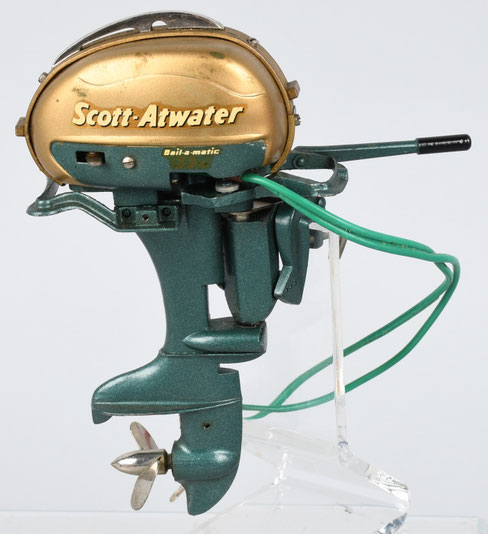- Baltmotors
- Beluga
- Beta Marine
- BMW
- Bukh
- Crusader
- Deutz
- Dynamic
- Evinrude
- Flover
- Gladiator
- Golfstream
- Hangkai
- HDX
- Hidea
- Honda
- Hyundai
- Ilmor
- Indmar
- Jet Force
- John Deere
- Johnson
- Kohler
- Kubota
- LEHR
- Lombardini
- Magnus
- MAN
- MarinePower
- Mariner
- Marlin
- Mercury
- Mikatsu
- Minn Kota
- Mitsubishi
- MotorGuide
- MTR Marine
- MTU
- Nanni Diesel
- Navigator
- Nexus
- Nissamaran
- Nissan Marine
- Oxe Diesel
- Parsun
- PCM
- Rotax
- Sail
- Sailor
- Scania
- Scott Atwater
- Sea-Pro
- Selva Marine
- Sole Diesel
- Suzuki
- Tohatsu
- Tomos
- Torqeedo
- Troll
- Vetus
- Volvo Penta
- Wartsila
- Watersnake
- Waukesha
- Yamabisi
- Yamaha
- Yanmar
- Zongshen
Scott Atwater outboard motors: service manuals free download PDF
|
Title |
File Size |
Download Links |
|
1960 Scott McCulloch outboard service manual for all models.pdf |
52.2Mb |
|
|
Scott Atwater 22 & 25 HP Service Manual.pdf |
1.6Mb |
|
|
Scott Atwater 3.6 HP Outboard Service Manual.pdf |
1.1Mb |
|
|
Scott Atwater 40 & 60 HP Service Manual.pdf |
3.4Mb |
|
Scott Atwater 5, 7.5, 10, & 16 HP Outboard Service Manual.pdf |
1.6Mb |
|
|
Scott Atwater 6 & 12 HP Service Manual.pdf |
2Mb |
|
|
Scott Electrical system service information from a general 1963 Outboard Service Manual.pdf |
322.6kb |
|
|
Scott Specialty tools plans from a general 1963 Outboard Service Manual.pdf |
218.1kb |
History of Scott-Atwater Outboard
K.I. Scott and B.B.Atwater owned a small tool workshop equipped with a good press. They started their business in 1932. In 1935, a serious man named Dumont contracted them to manufacture a small outboard motor for sale. Motor got to a technology exhibition in New York.
Then there were orders for several hundred of these engines. Before delivering the ordered motors to Mr. Dumont, our craftsmen made a beautiful stencil on each motor and wrote the name "CHAMPION". They still produced various kinds of tools in their workshop with the help of their press, but in addition now they also made outboard motors.
In 1939, Dumont signed a contract with Firestone for the sale of CHAMPION engines in her tire store. After that, S.I.Scott and G.B.Atwater completely switched to the manufacture of outboard motors. In 1941, Scott and Atwater, with their CHAMPION engine, became the second largest manufacturer of outboard motors in the United States. At that time, only 'Evinrude' produced more motors.
Such a relationship Dumont with a company manufacturing engines "CHAMPION", lasted from 1935 to 1942. With the development of World War II, most of America’s small and large engineering companies switched to military products, and Scott and Atwater were no exception. After the war, Dumont decided to start producing outboard motors on his own. "Firestone", as before, wanted to get for sale only motors from Scott and Water.
In 1946, the FIRESTONE and SCOTT-ATWATER motors made a splash in the market: they jointly offered a 3.6 hp engine in 1946, and 7.5 hp in 1947. By 1949, the line of manufactured engines included models in 3.6, 4, 5, and 7.5 hp, with engines from 4 to 7.5 hp. equipped with a full-featured gearbox 'forward-neutral-back'., which turned out to be a pioneering development for a long line of engines.
In 1950, a 16-horsepower outboard motor with a gearbox was created. In 1951, a 10 hp outboard engine appeared. So by 1951, the full line of motors included 3.6; 4; 5; 7.5; 10 and 16 hp In the same year, the fashion for high-speed motors came. The numbers that were now visible on the engine hoods meant speed. If it says '1-12' on a 3.6-hp engine hood, it means that a boat with such a motor can move at a speed of 1 to 12 miles per hour.
Such designations of speeds were used only in 1951-52. In 1952, a 4-hp engine was discontinued. But in 1953, the Golden Pennant appeared: an icon with a dark green stripe at the bottom and a gold stripe at the top. This designation was used only on engines with a capacity of 7.5 and 10 hp. This new paint scheme was used only for two outboard engines with hoods that were split in two. However, such motors did not go on sale and the circuit lasted only one year. In 1954, on engines with a capacity of 5, 7.5, 10 and 16 hp the newly invented system for pumping water out of the hold of a boat was installed.

Use quick search!
Contact us
If you have any questions, please contact us.
E-mail: downloadboatmanuals@gmail.com